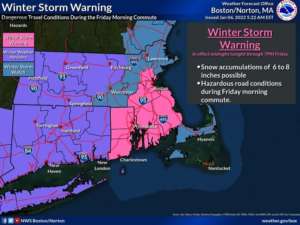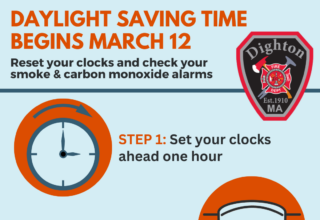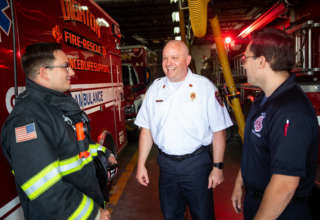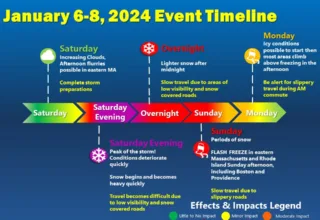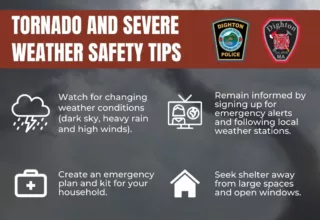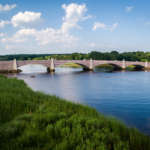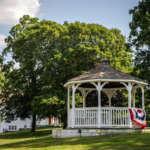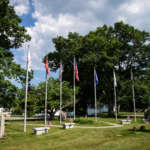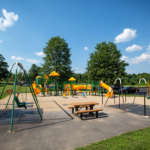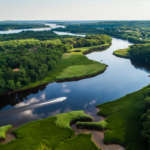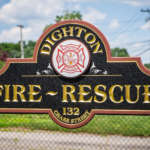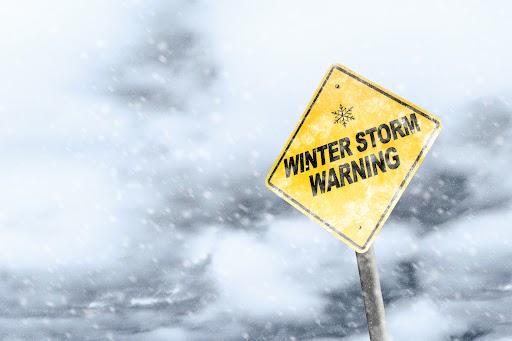
Chief Christopher Maguy and the Dighton Fire Department recommend that residents take the necessary safety precautions to prepare themselves for hazardous weather as the region prepares for the first potential major winter storm of the season.
Typically, winter storms can bring snow, sleet and freezing rain. Blizzards can even occur when strong wind causes blowing snow and whiteout conditions, resulting in dangerous road conditions. According to the National Weather Service (NWS), weather-related crashes cause more than 6,000 deaths and 480,000 injuries each year.
At this time, the National Weather Service (NWS) is predicting hazardous weather conditions with current snow accumulations forecast to reach 5-8 inches through Friday morning. In addition, the area is under a Winter Storm Warning from 1 a.m. – 7 p.m. Friday. Gusty winds and isolated power outages are possible, as well as freezing roads. According to the NWS, travel may be difficult to impossible during the Friday morning commute.
Visit weather.gov to see the forecast for Dighton and the surrounding area.
Residents are reminded that the forecast can change quickly and at any point and they should monitor the local forecast throughout the day. Stay informed by receiving alerts, warnings, and public safety information before, during, and after emergencies. Residents can also listen to local area radio, NOAA Radio or TV stations for the latest information and updates.
The Dighton Fire Department wishes to share the following winter weather safety tips provided by NWS and Red Cross:
Before a Winter Storm
- Keep your vehicle’s gas tank full so you can leave right away in an emergency and to prevent the fuel line from freezing.
- Service snow removal equipment before the winter storm season and maintain it in good working order.
- Keep handy a warm coat, gloves or mittens, hat, water-resistant boots, and extra blankets and warm clothing for each member of the household.
- Learn how to protect pipes from freezing.
- Be prepared to evacuate if you lose power or heat and know your routes and destinations. Find a local emergency shelter.
- Check your emergency kit and replenish any items missing or in short supply, especially medications and medical supplies. Keep it nearby.
- Be sure you have ample heating fuel. If you have alternative heating sources, such as fireplaces, wood- or coal-burning stoves, or space heaters, be sure they are clean and in working order.
- Review generator safety: Never run a generator in an enclosed space.
- Make sure your carbon monoxide detector is working correctly and that the outside vent is clear of leaves and debris. During or after the storm, make sure it is cleared of snow.
- Home fires are common each winter when trying to stay warm. Review ways to keep your home and loved ones safe.
During a Winter Storm
- Stay indoors and wear warm clothes. Layers of loose-fitting, lightweight, warm clothing will keep you warmer than a bulky sweater. If you feel too warm, remove layers to avoid sweating; if you feel chilled, add layers.
- Bring your companion animals inside before the storm begins. Move other animals to sheltered areas with a supply of non-frozen water. Most animal deaths in winter storms are caused by dehydration.
- Check on relatives, neighbors, and friends, particularly if they are elderly or if they live alone.
- If you must go outside, protect yourself from winter storm hazards:
- Wear layered clothing, mittens or gloves, and a hat. Outer garments should be tightly woven and water repellent. Mittens or gloves and a hat will prevent the loss of body heat.
- Cover your mouth to protect your lungs from severely cold air. Avoid taking deep breaths; minimize talking.
- Watch for signs of hypothermia and frostbite.
- Keep dry. Change wet clothing frequently to prevent a loss of body heat. Wet clothing loses much of its insulating value and transmits heat rapidly away from the body.
- Avoid overexertion, such as shoveling heavy snow, pushing a vehicle, or walking in deep snow. The strain from the cold and the hard labor may cause a heart attack. Sweating could lead to a chill and hypothermia.
- Walk carefully on snowy, icy sidewalks. Slips and falls occur frequently in winter weather, resulting in painful and sometimes disabling injuries.
- If you must go out during a winter storm, use public transportation if possible. About 70 percent of winter deaths related to ice and snow occur in automobiles.
- If you must drive during winter weather conditions:
- Make sure all fluid levels are full and ensure that the lights, heater and windshield wipers are in proper condition. Ensure your tires have proper traction. Clear snow or ice fro the roof of your vehicle, windows, lights and cameras.
- Keep your gas tank near full to avoid ice in the tank and fuel lines.
- Avoid traveling alone. Let someone know your timetable and primary and alternate routes.
- Be on the lookout for sleet, freezing rain, freezing drizzle, and dense fog, which can make driving very hazardous. If dangerous conditions are predicted, consider altering your travel plans.
- Drive slowly and with vigilance. Don’t crowd any plows you may see and only pass when you’re able to safely do so.
- Don’t leave the house without the following a fully charged mobile phone, car charger and an emergency supplies kit in your car. Ensure your kit includes additional layers of clothing and non-perishable food.
- If your car gets stuck during a storm:
- Stay in the vehicle. If you leave your vehicle, you will become disoriented quickly in wind-driven snow and cold.
- Run the motor about 10 minutes each hour for heat. While running the motor, open the window a little for fresh air to avoid carbon monoxide poisoning. Clear snow from the exhaust pipe to avoid gas poisoning.
- Be visible to rescuers. Turn on the dome light at night when running the engine. Tie a bright colored cloth, preferably red, to your antenna or door. After snow stops falling, raise the hood to indicate you need help.
After a Winter Storm
- Stay informed and pay attention to the information provided by local authorities.
- Avoid driving and other travel until conditions have improved.
- Black ice is patchy ice on roadways that cannot easily be seen. Even if roadways have been cleared of snow following a storm, any water left on the roadways may freeze, resulting in a clear sheet of ice, also known as black ice. It is most dangerous in the early morning due to below freezing nighttime temperatures. If the outside temperature is near freezing, drive like you are on ice because you may be,
- Know the signs of frostbite and hypothermia.
Residents are also asked to assist firefighters by clearing snow away from fire hydrants during and after the storm. Snow should be cleared 3 feet all around the hydrant so firefighters have enough room to connect a hose. Clearly visible, accessible fire hydrants can save homes and lives in the event of a fire. If a fire hydrant is lost or buried in snow, firefighters can lose valuable time trying to locate it when they first arrive at a scene. Residents are also urged to look out for elderly or handicap neighbors by taking a few extra minutes to shovel out their hydrants if needed.
For additional winter storm safety information, visit NWS or the Red Cross. For any other questions on cold weather safety please visit weather.gov.
###

